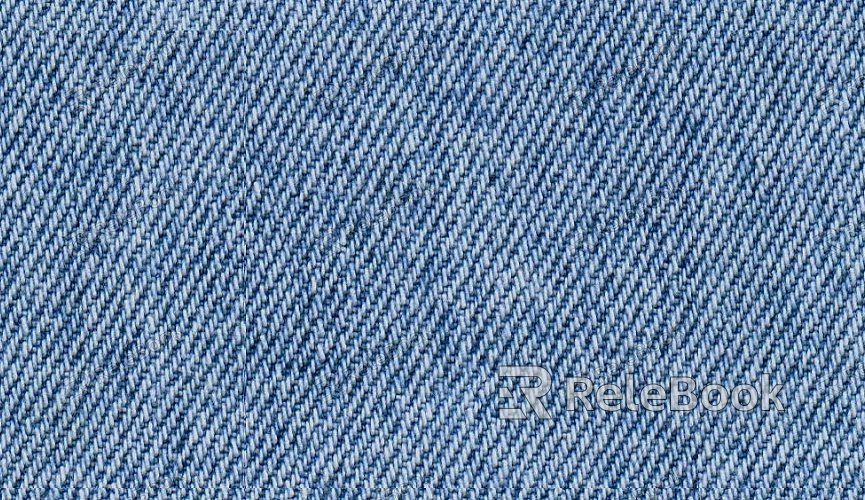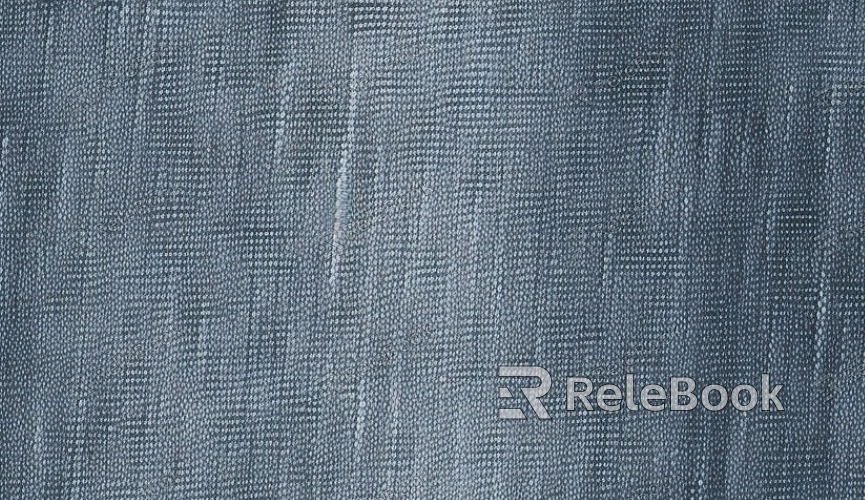How to Make Denim Textures in 3D Coat
Denim, with its coarse, tight weave and characteristic blue tone, is a popular choice for clothing and furniture design. Realistic denim textures can add visual appeal to any project. This guide will outline specific steps and techniques in 3D Coat for creating denim textures, helping designers achieve authentic results efficiently.

Gather Denim References and Choose a Base Color
Start by collecting high-resolution images of denim with various colors, wear levels, and textures to observe the unique features of real denim.
In 3D Coat, select a dark or light blue as the base color to reflect denim’s characteristic tones.
Use the color picker tool to fine-tune the blue shade, enhancing the realism of the texture by creating an accurate foundation for the layers to come.
Create a Base Layer for the Denim Texture
Use 3D Coat’s brush tools to lay down the fundamental texture on the model. Denim typically has a fibrous structure, so use a soft brush to depict the fine texture of the fabric’s surface.
Adjust brush opacity to layer light and dark shades, creating depth and dimension for a realistic fabric effect.
After completing the base layer, save this as a "base denim texture" layer to streamline future adjustments and allow for easy addition of further details.
Add Wear Effects to Enhance Realism
Denim often has natural wear patterns like faded or distressed areas. Select a custom brush in 3D Coat with white or light gray and gently paint common wear spots, focusing on folds and edges.
Use the eraser tool to blend areas naturally, adjusting transparency to create a believable fading effect.
Vary the intensity of the wear patterns to mimic the aged look of real denim, particularly in high-stress areas.
Use Noise to Simulate the Rough Texture of Fabric
Denim has a grainy, rough texture that can be replicated with 3D Coat’s noise tool. Select a spray brush with a low intensity and add noise effects in shadowed areas and along folds.
Try layering different shades of blue to add to the textured feel, making the surface look realistic and multi-dimensional.
Control the density of the spray to avoid overcrowding the texture, maintaining the natural look of denim’s rough surface.
Add Fiber Lines to Mimic the Fabric Structure
Denim’s structure is woven, with intersecting fibers. Use 3D Coat’s line or fine brush tools to add horizontal and vertical fiber lines.
These lines should be subtle. Using light or dark blue, lightly trace the fabric’s weave structure, paying attention to line thickness and direction for a natural appearance.
Lower the opacity for a softer look, ensuring the fibers integrate seamlessly into the denim’s texture.
Incorporate Wrinkles for Added Depth
Denim often forms natural wrinkles. In 3D Coat, use dark blue or black to add shading to crease areas, then add highlights with a lighter color along the tops of the folds.
Use a soft brush to create a smooth transition between shadows and highlights, enhancing the depth of each wrinkle.
Avoid overly symmetrical folds; randomize placement for a natural appearance closer to real-life denim fabric.

Overlay Patterns for Extra Detail
Denim may have decorative stitching or logos. Use 3D Coat’s “decals” feature to apply these patterns onto the denim.
Adjust the transparency of the patterns to blend them naturally into the fabric, avoiding overly sharp or prominent elements.
Stitching should be a muted gray or dark blue, complementing the denim without overwhelming the fabric’s texture.
Adjust Material Properties for Realistic Fabric Appearance
In 3D Coat, select a suitable material type, such as matte, to represent the soft look of denim. For a slight sheen, adjust the reflection strength carefully.
Modify the glossiness settings to ensure the denim reacts naturally to light without looking overly reflective, retaining the texture of fabric.
Preview the material under different lighting conditions to verify that the denim texture aligns with the project’s requirements.
Preview and Refine the Texture
After completing the texture, use 3D Coat’s preview window to inspect details such as shadows, wrinkles, and roughness.
Make any needed adjustments to ensure that the fabric details are realistic across various lighting and angles.
Save the final denim texture for reuse in other projects, boosting efficiency and consistency in future work.
Creating denim textures combines elements like color, shadow, wear patterns, and grain for a highly realistic effect. By applying these techniques in 3D Coat, you can quickly craft denim textures that meet project needs. If you're looking for more high-quality 3D models and textures, Relebook offers an extensive selection to help you achieve stunning visual results with ease.

